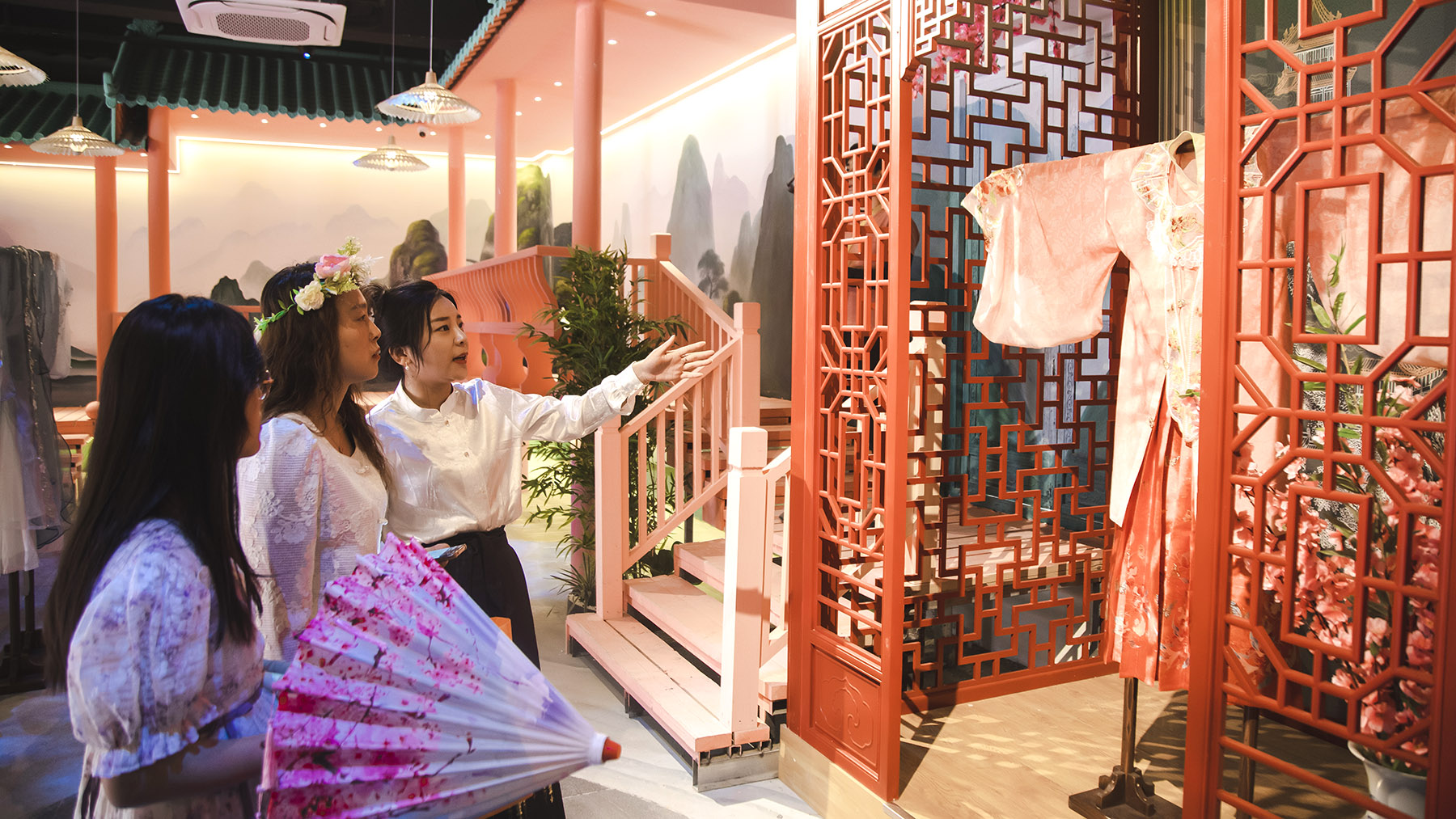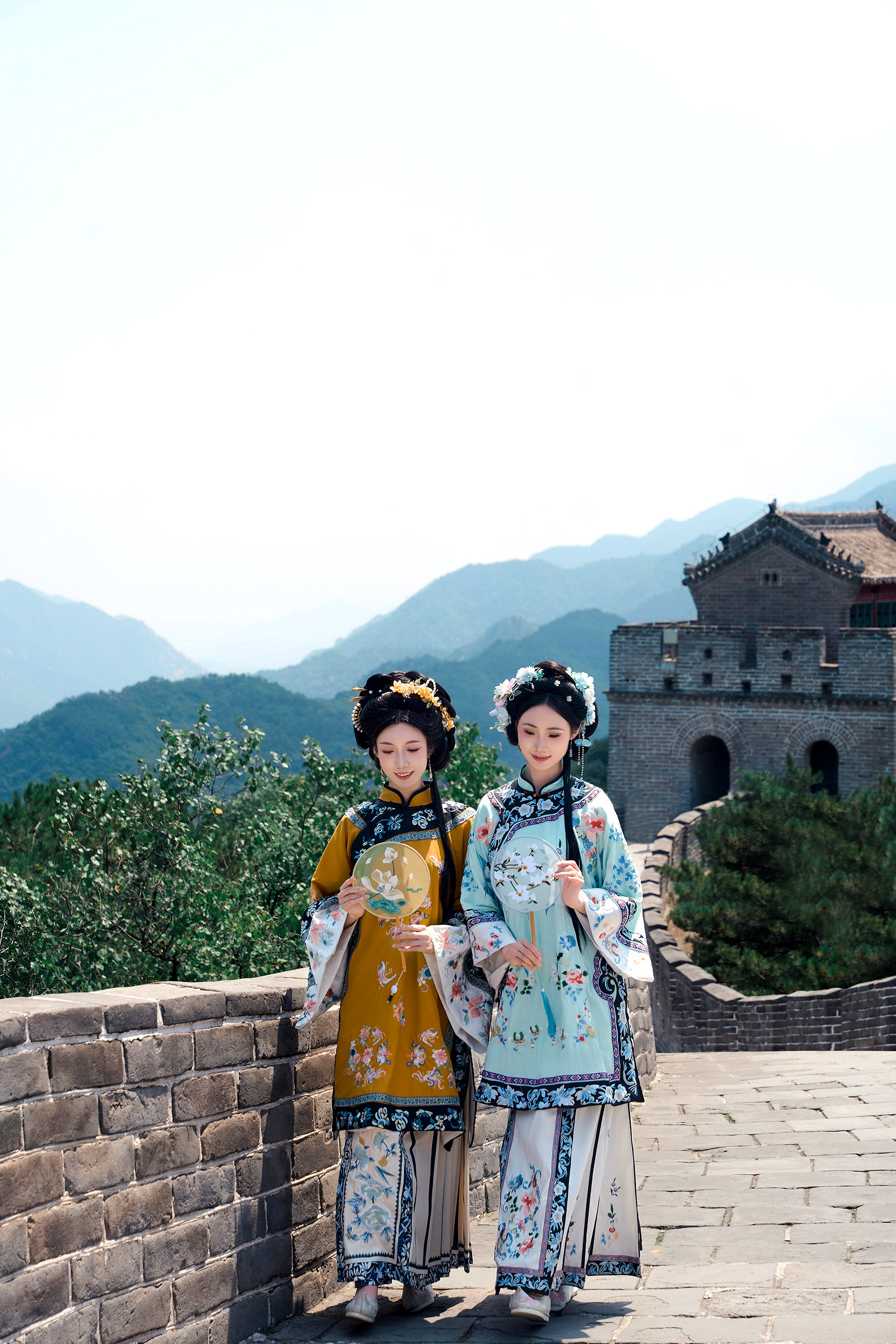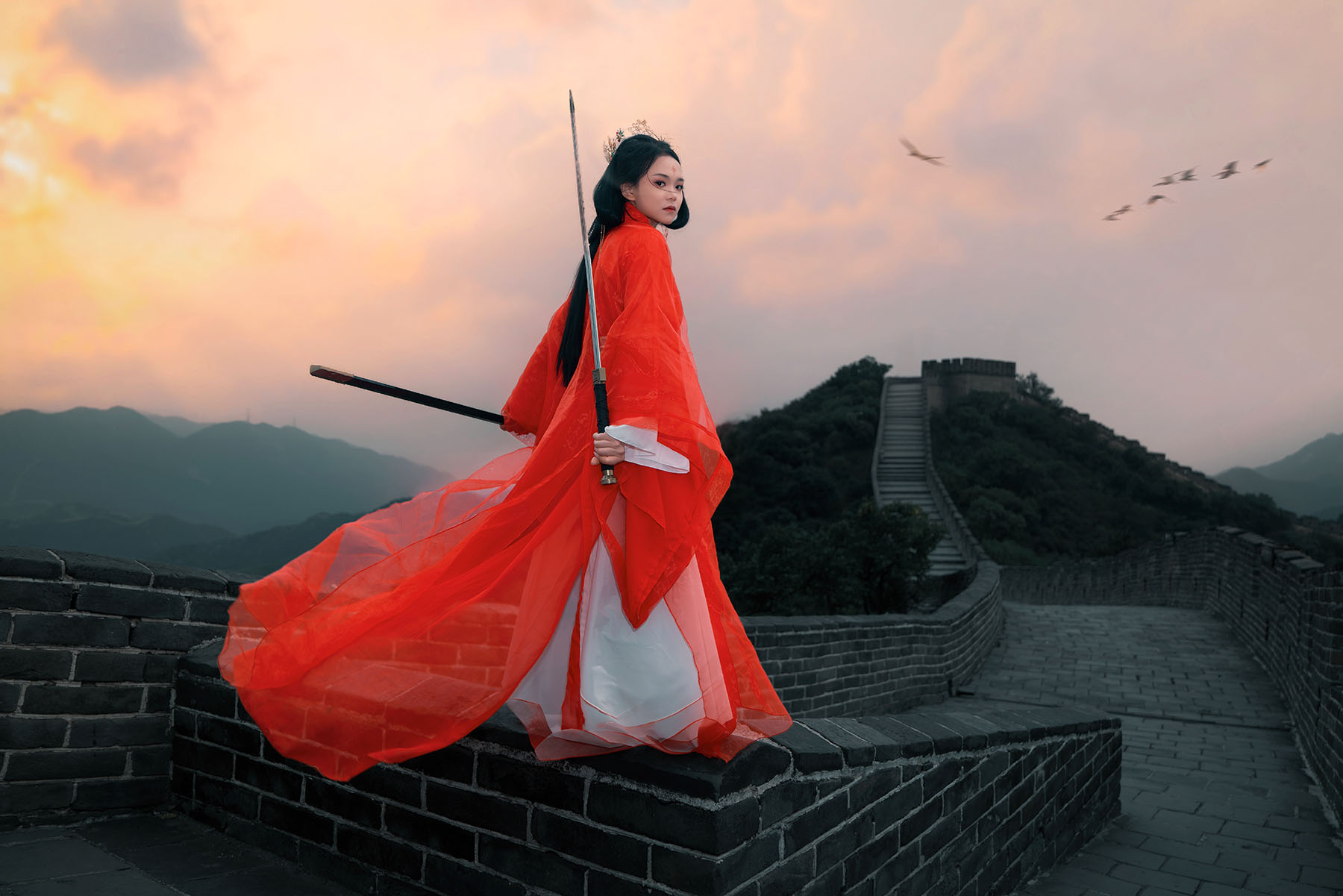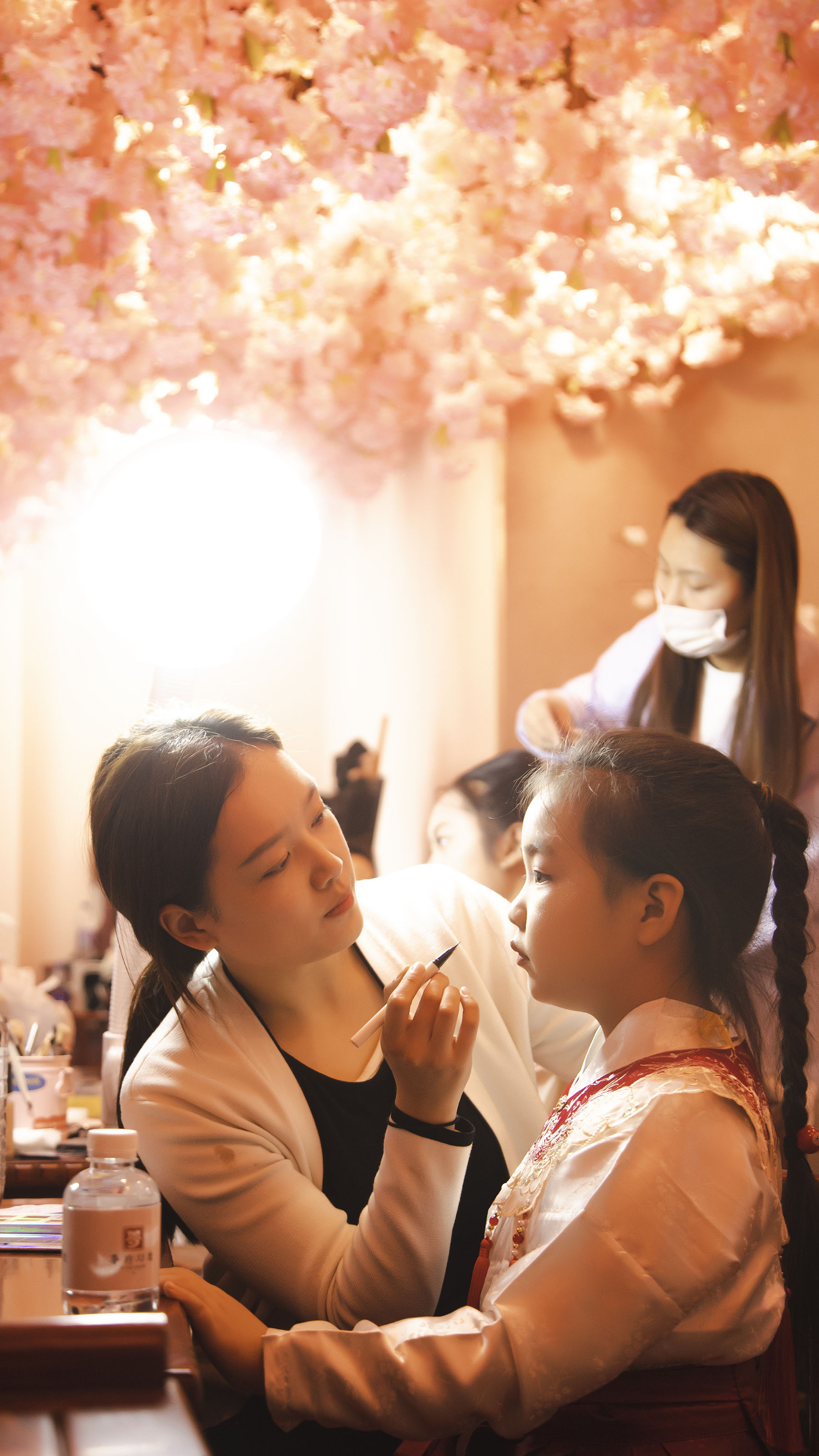Photographers go a natural direction, as travel memorabilia trends

The sun beat down on the ancient stones of Beijing's Beihai Park, but Ma Zhixue barely noticed the heat.
For nearly 12 hours a day during summer, he framed through his lens not only the city's iconic landscapes but also the fleeting, authentic moments of travelers to the capital city from around the world.
"At the peak of the summer tourism season, I served up to 25 clients a day," the full-time travel photographer says.
Ma's journey into travel photography began nearly five years ago when he noticed a rising demand for such photography experience.
"More clients are requesting shoots during their travels, featuring hanfu (traditional Chinese attire), imperial-era costumes and atmospheric ancient architecture," he notes.
Locations like Beijing's Summer Palace, the Temple of Heaven, and Beihai Park remain perennially popular for their ability to evoke China's historical grandeur, he explains.
READ MORE: Cultural vibes eagerly embraced by holiday travelers
While traditional photography tends to rely more on controlled poses and studio lighting, and landscape photographers must chase specific natural lighting, Ma pays more attention to capturing people candidly within historical settings.
"My clients range from the very young to the elderly. My goal is always the same: to create images that are genuine, spontaneous and deeply personal," he emphasizes.
A typical shoot begins well before the camera is lifted. Ma consults with clients about their preferences, suggests locations and styles, and often flips through sample albums to align each other's expectations.
During photography sessions, he avoids rigid directions and instead encourages natural interactions and movement. After a shoot, he reviews the images on-site with the clients and reshoots if necessary, ensuring everyone leaves happy.
As the summer crowds gradually thinned, a brief lull allowed Ma Zhixue to catch his breath, but not for long. The National Day holiday has seen his full packed calendar.

By mid-September, four days of the eight-day National Day and Mid-Autumn Festival holidays have been booked, he says with a mix of pride and exhaustion.
"The demand for a blend of photography and cultural storytelling shows no sign of slowing down," Ma says.
Sun Na, manager of the overall travel photography operations at the iconic cultural landmark Badaling Great Wall, says the business has attracted visitors for a range of special occasions, from proposals and graduation celebrations to family reunions and diaspora homecomings.
"We are not simply using the Wall as a backdrop but are opening a channel for emotions to resonate with ancient civilization," Sun says.
Epic grandeur, ritual significance and a distinct Chinese imprint are guiding the principles behind everything from location selection to style choices, she explains.
Sun's team has developed narrative-driven themes such as Guarding the Great Wall, the Silk Road Envoy, and Moon Over the Frontier, incorporating costumes that bear historical elements and dignified poses to reflect the Great Wall's solemnity.
"While Chinese tourists often seek to integrate into the historical tapestry through traditional hanfu attire or cheongsam, international visitors tend toward contrast — posing in modern wedding gowns, or even suits, against the ancient stones, expressing vitality against silence," Sun observes.
According to Qichacha, a leading business information platform, China's travel photography market still has considerable growth potential.
More than 6,000 travel photography enterprises are currently in operation nationwide. In 2024 alone, over 2,500 new businesses were registered, a year-on-year increase of over 22 percent.
Taierzhuang ancient town in Zaozhuang city of Shandong province prepared to welcome visitors with Mid-Autumn Festival-themed photoshoots inspired by Chang'e, the moon goddess.
"It is a perfect fusion of myth, history and modern creativity," says Feng Jinle, an official in charge of travel photography operations at the resort, part of a UNESCO World Heritage site.
Feng took the lead in developing the town's travel photography industry in early 2023, testing the market by sharing photography content highlighting hanfu on the popular livestream platform Douyin.

The town's unique historical backdrop, featuring Beijing-Hangzhou Grand Canal culture, provides rich material for themed photoshoots.
"Young women took quite a shine to the idea of dressing as ancient brewery girls along the canal," Feng says.
It immediately garnered an enthusiastic response from online viewers, which led to the travel photography business' official launch a few months later.
The first store, located near the scenic spot's east gate, offers quick-change hanfu services, allowing visitors to immerse themselves in traditional attire upon entering the ancient town.
By the end of 2023, revenue from this single store had reached nearly 2 million yuan ($281,550), Feng says.
As demand grew, a second flagship store was opened at the center of the area, spanning 650 square meters and catering to mid-range and high-end customers with customized, historically accurate costumes and scenes inspired by ancient dynasties.
A third store, developed in collaboration with the local civil affairs bureau and themed around marriage registration, is scheduled to open later this year.
"Our primary customer base is predominantly female, accounting for more than 92 percent, with over 50 percent under 35," Feng says.
Today, the project employs 12 full-time staff, including makeup artists, photographers and digital marketing specialists.
The booming travel photography industry has also inspired over 40 businesses within the ancient town, including hotels and retail stores, to incorporate hanfu services, generating a combined annual revenue of over 20 million yuan.
To manage the influx and maintain a quality experience, Feng says his team has implemented measures, such as designated photography zones and guidelines that help to avoid disrupting other visitors.
Looking ahead, the scenic spot plans to incorporate AI-assisted costume selection and digital scene previews to enhance efficiency. The team is also developing customized short videos and drama productions to further deepen the integration of culture and technology.
"We're giving visitors a chance to step into history and become part of Taierzhuang's living heritage," Feng says.

Kang Jiawang has firsthand experience of how travel photography has become a central part of the visitor experience in Xijiang Qianhu Miao village, Guizhou province.
"We've seen everything from family portraits to friends and parent-child shoots," says Kang, who runs a travel photography store in the ethnic Miao village, known for its rich cultural heritage and breathtaking natural landscapes.
Since opening in May 2024, the store has welcomed over 30,000 visitors, with peak travel season seeing around 150 clients per day.
Kang's team, which includes eight photographers and eight makeup artists, usually works from early morning to midnight to meet the demand.
They offer an immersive experience where visitors can step into a world of Miao ethnic culture through traditional clothing, makeup and a stunning landscape.
"There's something magical about night photography here. The way the village lights up, combined with traditional Miao outfits, makes for truly spectacular images," Kang explains.
ALSO READ: Winter visitors give Heilongjiang warm praise
Located in the heart of the village, Kang's store has become a go-to spot for tourists eager to capture the village's essence.
The store specializes in providing traditional Miao attire and expert makeup services, ensuring visitors are fully immersed in the culture. Guests are guided to various scenic spots, from the observation deck and ancient alleyways to the iconic wind-and-rain bridge.
"We focus on providing a seamless experience from the moment they walk in until they leave with their desired images," Kang says.
For those looking to break into the industry, Beijing-based travel photographer Ma Zhixue emphasizes that technical skill alone is not enough.
"A successful travel photographer must have passion, cultural insight, creativity, and strong communication skills. It's about understanding people as much as pixels, and stories as much as settings," he says.
Contact the writers at yangfeiyue@chinadaily.com.cn


